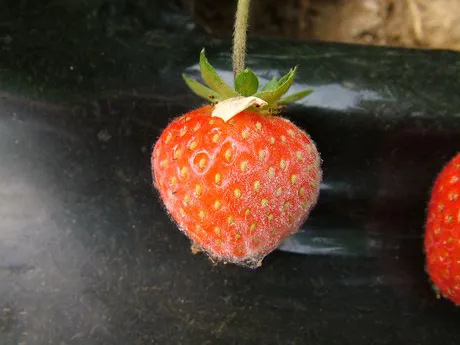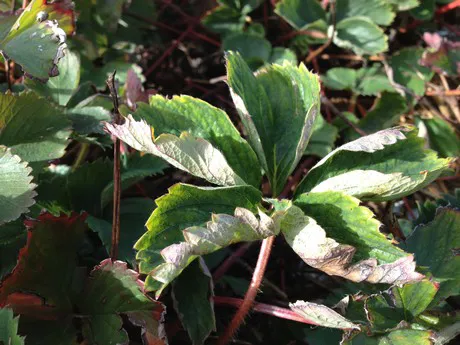A new strategy developed by AHDB to manage powdery mildew in strawberry crops could reduce inputs and costs by 50 per cent compared with a standard seven-day fungicide programme.
In 2018 trials, a managed programme used significantly fewer spray applications, which reduced the cost by half compared to the traditional week-long approach. It was equally effective at maintaining control of powdery mildew.

Powdery mildew on strawberry. Credit: Roger Umpelby
Scott Raffle, AHDB Knowledge Exchange Manager, said: “In contrast to the seven-day fungicide programme where all permitted numbers of applications of the products had been made by the end of the season, far fewer applications had been made and a number were still available should late infection require additional control.
“This will have a welcome benefit for growers’ bottom line, but also has significant benefits for growers’ integrated pest management programmes.”
A standard seven-day fungicide programme was compared to a managed programme which uses control products only when the strawberry crop is at risk of infection. It is based upon visual inspection for incidence of strawberry powdery mildew, the environmental risk of mildew infection (which used the NIAB EMR strawberry powdery mildew model based on temperature and humidity records) and the strawberry growth stage.

Strawberry powdery mildew
Growers can view the managed programme in practice at the Water Efficiencies Technologies (WET) Centre, a centre of excellence to develop new commercial water-saving techniques for precision irrigation and fertigation for soft fruit growers.
Tours of the WET Centre will take place at Fruit Focus, on July 17, at East Malling, Kent.
The WET Centre, now co-funded by AHDB, is designed to help growers acquire and implement learning into their business through practical demonstrations.
 AHDB
AHDB